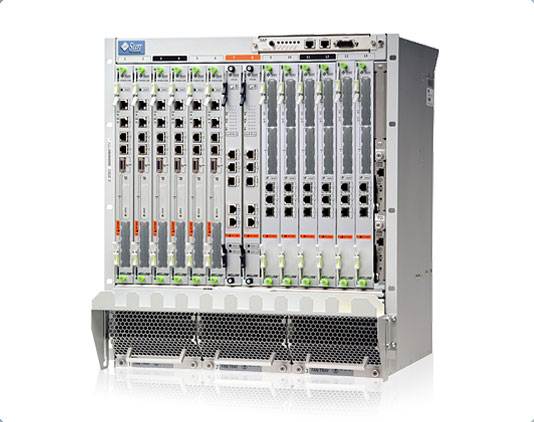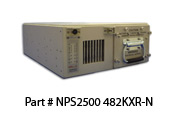Smart, Efficient Use of Available Power

While the power draw of modern servers has increased, their power management capabilities have typically improved with them, enabling faster processor performance at only slightly higher power consumption. The same can be said for file storage arrays. However, some manufacturers are smarter about power management than others and their components will draw less power while providing the same capabilities and performance. When components of similar capability and performance are considered, the component requiring less power should be chosen, all things otherwise being equal.
Electricity is a utility, and there is only a finite amount of power available to each shipboard cabinet – typically two 115VAC 60Hz, 20 amp circuits. Rewiring for a higher capacity circuit can be cost-prohibitive. The individual components that meet the entire system requirements then must be capable of not exceeding the finite amount of energy provided with the existing shipboard electrical system configuration. Most manufacturers have begun making smarter use of the power their products consume, but we could also benefit from smarter and more efficient distribution of the electricity supplied to power shipboard electronics. An obvious way to accomplish this is to eliminate unnecessary and inefficient power conversion stages by operating from ±48VDC output power.
±48VDC Power
 The ATCA standard requires -48VDC input power for computers and similar electronics. A standard shipboard online UPS converts incoming AC electricity to DC and then back to AC. That AC Output is almost immediately converted back to DC energy to power most computing equipment. Most ATCA products therefore will consume less electricity from DC power than AC power by eliminating unnecessary power conversion steps where electricity is converted to heat energy through inefficiencies. An ATCA shipboard computing solution powered by two ±48VDC UPS’s can actually provide more power from the same source through increased efficiencies while ensuring true electrical redundancy.
The ATCA standard requires -48VDC input power for computers and similar electronics. A standard shipboard online UPS converts incoming AC electricity to DC and then back to AC. That AC Output is almost immediately converted back to DC energy to power most computing equipment. Most ATCA products therefore will consume less electricity from DC power than AC power by eliminating unnecessary power conversion steps where electricity is converted to heat energy through inefficiencies. An ATCA shipboard computing solution powered by two ±48VDC UPS’s can actually provide more power from the same source through increased efficiencies while ensuring true electrical redundancy.
NOVA Power’s Solutions ±48VDC UPS meets the relevant MIL-STDs for a shipboard naval C4I application, offers a hot-swappable battery tray for easy service and reduced training, and features an industry-leading “flow-through” heat sink technology, thereby eliminating the need for air filters and protecting the internal electronics from airborne contaminants.
Further, if your interest is in a Joint Forces application, a variant of this product has been in use in USMC and U.S. Army applications since 2002.
A True Open Architecture Computing Standard
The Advanced Telecommunications Computing Architecture, or ATCA, is an existing open architecture platform with over 400 contributing companies. ATCA is primarily used by the telecommunications market, and there are already many commercial-off-the-shelf (COTS) products available that meet the requirements of this standard.
- “This series of specifications incorporates the latest trends in high speed interconnect technologies, next generation processors and improved reliability, manageability and serviceability.“
- Companies participating in the ATCA effort have brought a wide range of knowledge of the market. They include telecommunications equipment manufacturers, board and system level vendors, computer OEMs, software companies and chassis, connector and power supply vendors.”
Many ATCA-compliant products follow the Network Equipment Building System (NEBS) standard for safety and spatial and environmental design guidelines. While the NEBS standards are by no means equivalent to the MIL-STDs of the Navy, they are similar in their concern for shock, vibration, EMI, and temperature/humidity.
The ATCA standard with NEBS-compliant products provides a large, competitive market from which the U.S. Navy could draw many networking and processing products, including Blade Servers, Storage Arrays, Power Conditioners, and Uninterruptible Power Supplies.
By using electronic equipment that accepts DC input rather than AC, and by providing UPS’s with DC output power instead of AC, we can increase the amount of electricity available to our modern shipboard electrical systems by eliminating two unnecessary power conversion stages. Further, we can take advantage of open architecture products already available to the telecommunications market by focusing specifically on a ±48VDC output power requirement.






